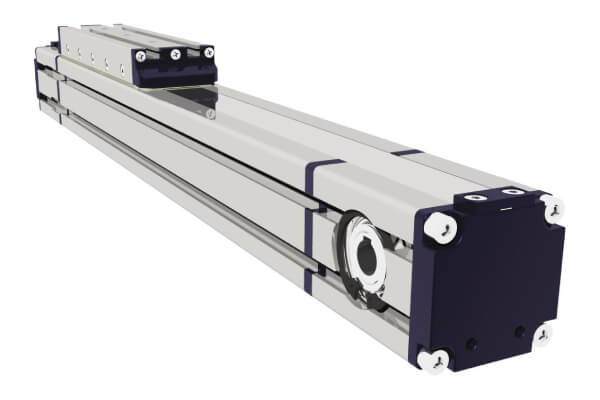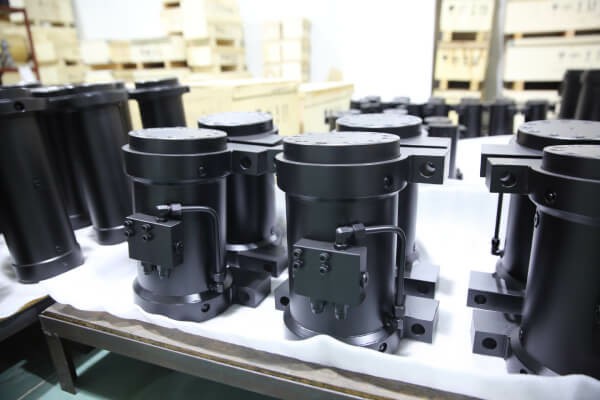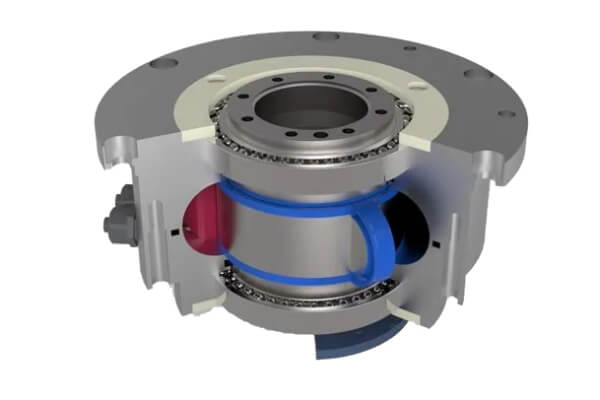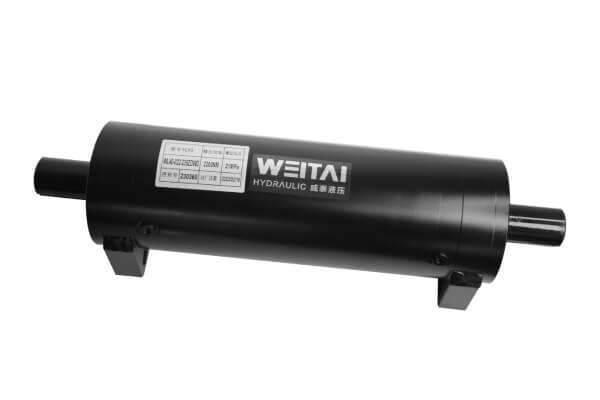Hydraulic actuators are devices that convert hydraulic energy into mechanical motion, playing a crucial role in various industrial applications due to their ability to provide high force and precise control. Here are four types of hydraulic actuators and their features:

1. Hydraulic Cylinders (Linear Actuators)
Hydraulic cylinders are the most common type of hydraulic actuators. They convert hydraulic energy into linear motion and are essential in numerous industrial applications.
Features
High Force Output: Hydraulic cylinders can produce significant force, making them ideal for heavy-duty applications such as lifting, pushing, or pulling heavy loads.
Precise Control: They offer precise control over motion, which is crucial for applications requiring accurate positioning, such as robotic arms and CNC machines.
Simple Construction: Consists of a cylinder barrel, piston, and piston rod. This simple design makes them reliable, durable, and easy to maintain.
Versatile Applications: Used in construction machinery (e.g., excavators, bulldozers), manufacturing equipment (e.g., presses, injection molding machines), automotive systems (e.g., shock absorbers, brakes), and more.
Variety of Sizes and Configurations: Available in single-acting and double-acting configurations, as well as various sizes and stroke lengths to suit different applications.
2. Hydraulic Motors (Rotary Actuators)
Hydraulic motors convert hydraulic energy into rotational motion, driving machinery that requires continuous or intermittent rotary movement.
Features
High Torque Output: Hydraulic motors can generate high torque at low speeds, making them suitable for applications like winches, conveyors, mixers, and drilling equipment.
Continuous Rotation: Capable of providing continuous rotational motion, unlike hydraulic cylinders which provide linear motion. This makes them ideal for tasks requiring constant movement.
Durable and Robust: Built to withstand harsh operating conditions, heavy loads, and demanding environments, ensuring long-term reliability.
Wide Range of Speeds: Can operate over a wide range of speeds, providing flexibility in various applications from slow, powerful movements to fast, efficient rotations.
Types: Includes gear motors, vane motors, and piston motors, each with specific advantages. Gear motors are simple and robust, vane motors offer smooth operation, and piston motors provide high efficiency and power.
3. Hydraulic Vane Actuators (Rotary Actuators)
Hydraulic vane actuators are a type of rotary actuator that uses vanes to convert hydraulic energy into rotary motion. They are known for their compact design and smooth operation.
Features
Compact Design: Typically, it is more compact than other types of rotary actuators, making them suitable for space-constrained applications where installation space is limited.
Smooth and Efficient Operation: Provides smooth and efficient rotational motion, ideal for applications requiring precise and consistent movement, such as machine tools and automated systems.
High Speed Capability: Can operate at high speeds, providing quick response times and enabling fast operation cycles in high-speed applications.
High Efficiency: Vane actuators are known for their high mechanical efficiency and low internal leakage, resulting in energy savings and reliable performance.
Versatility: Used in various applications including machine tools, robotics, automated systems, and other precision machinery where compact, efficient rotary motion is required.
4. Hydraulic Semi-rotary Actuators
Hydraulic semi-rotary actuators, also known as limited rotation actuators, convert hydraulic energy into partial rotational motion, typically less than 360 degrees. They are designed for applications where limited angular movement is required.
Features
Limited Rotational Motion
Partial Rotation: These actuators are designed for applications requiring angular movement within a limited range, usually from a few degrees up to 360 degrees, but not continuous rotation.
Adjustable Stroke: Many models allow for adjustment of the rotational stroke to meet specific application needs.
High Torque Output
Powerful Movement: They provide significant torque output, making them suitable for applications that require powerful and precise movement within a limited range.
Consistent Performance: Capable of delivering consistent torque throughout the rotation range.
Compact and Robust Design
Space-Saving: Their compact design makes them suitable for applications where space is limited.
Durable Construction: Built to withstand harsh operating conditions and heavy loads, ensuring long-term reliability and durability.
Precise Control
Accurate Positioning: Hydraulic semi-rotary actuators offer precise control over the angular position, which is essential for applications requiring exact movement and positioning.
Smooth Operation: Designed to provide smooth and controlled rotational motion, minimizing shocks and vibrations.
Versatile Mounting Options
Flexible Installation: Available with various mounting configurations, allowing for easy integration into different systems and machinery.
Customizable: Many actuators can be customized to fit specific mounting and operational requirements.
Wide Range of Applications
Industrial Automation: Used in robotic arms, automated manufacturing equipment, and assembly lines for tasks that require precise rotational movement.
Material Handling: Employed in conveyors, sorting systems, and packaging machinery for controlled positioning and movement of materials.
Aerospace and Defense: Utilized in missile guidance systems, aircraft control surfaces, and other aerospace applications requiring precise angular control.
Marine and Offshore: Applied in winches, valves, and other marine equipment for controlled rotation in harsh marine environments.
Safety and Reliability
Fail-Safe Options: Many models are equipped with fail-safe mechanisms to ensure safe operation in case of hydraulic system failure.
High Reliability: Designed for high reliability and low maintenance, ensuring continuous operation in critical applications.
Comparison and Applications
Hydraulic Cylinders: Best for applications requiring strong linear motion, such as lifting heavy objects, pressing, or clamping in construction, manufacturing, and automotive industries.
Hydraulic Motors: Ideal for tasks requiring rotary motion and high torque, such as driving wheels, conveyors, winches, and mixers in material handling, marine, and industrial machinery.
Hydraulic Vane Actuators: Suitable for applications needing compact, efficient rotary motion with high-speed capability, such as automated machinery, robotics, and precision tools.
Hydraulic Semi-rotary Actuators: Used in a wide range of industries for applications that require limited angular movement with high torque.
Conclusion
Hydraulic actuators, including hydraulic cylinders, hydraulic motors, hydraulic vane actuators, and hydraulic semi-rotary actuators, each offer unique features that make them suitable for specific applications. Understanding these features helps in selecting the right type of actuator for a given task, ensuring optimal performance, efficiency, and reliability in various industrial processes.



